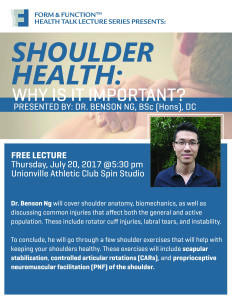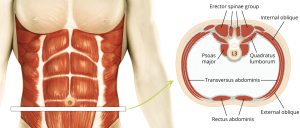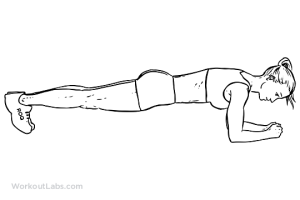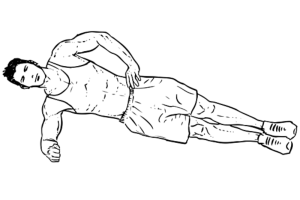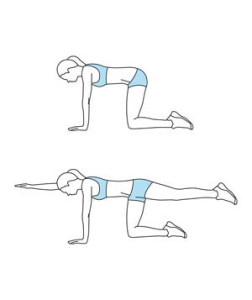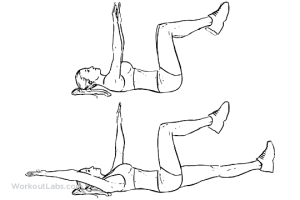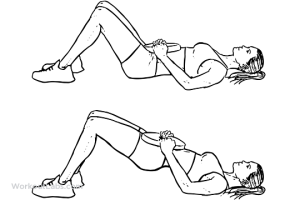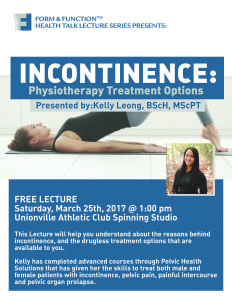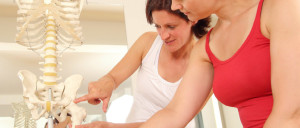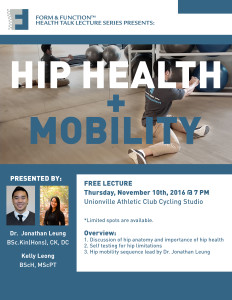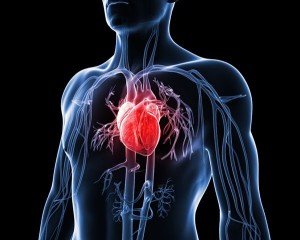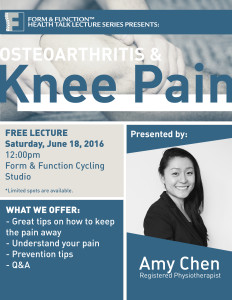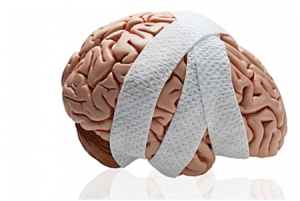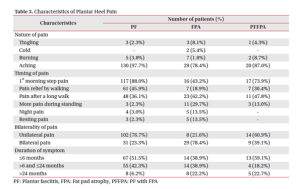Health Talk: The Core
Ever heard of someone telling you that they are “training their core.” Or have a fitness/rehabilitation professional tell you that you have a weak core? What does that mean? How do you strengthen it? Well, let’s talk about what the core is first of all.What is the Core?
- When professionals refer to the core, they are talking about a set of muscles around your stomach, back and hips. These include: rectus abdominus, internal and external obliques, transverse abdominus, quadratus lumborum and the gluteal. Collectively this group of muscles, when functioning correctly, is capable of creating a stable environment for the spine by using both strength and endurance to prevent excessive spinal movements. Basically, the core is designed to act as a platform from which your arms and legs push off of to create motion. Imagine if this platform (core) was very wobbly (ie weak); when you use your arms and legs, the wobbly platform will shake. This shaking can then cause your ligaments, joints and muscles to be overused or used improperly leading to injury.
How do I strengthen the Core?
- There are several exercises that are great for building core strength and endurance. Because the core helps stabilize, you will notice these exercises hardly cause the spine to move. You will be either holding a position without movement or holding the core steady while moving your arms and/or legs. Here are the five exercises I prescribe for core training.
- Plank
- Hold the plank position for as long as you can without feeling sore in the back. You should only feel your stomach muscles working. Try to do at least 3 sets of 30sec+. Work your way up to 60sec.
- Side plank:
- Hold the side plank position for as long as you can. You should only feel your side stomach muscles working. Try to do at least 3 sets of 30sec+. Work your way up to 60sec.
- Bird dog:
- Lift up alternate arm and leg and hold in position without the core moving. If there was a small ball on your back during the exercise, it should not fall off. Hold that position for 5-10sec, and repeat on both sides 30 times.
- Dead bug:
- Start with both arms and legs in the air. Slowly lower alternate arm and leg to just above the floor and hold. Your back should not arch at all. If it does, bring your feet up slightly higher. Hold the position for 5-10sec, and repeat on both sides 30 times.
- Glute bridge
- Lift your hips up off the floor with your feet planted shoulder width apart. Hold this position for 5-10sec and lower down. Repeat 30 times.
These exercises are but some that can strengthen your core. You can always consult the professionals at Form and Function clinic to progress these exercises once they become too easy or if you have any questions to start. Work on these exercises and you will lower the risk of future back pain episodes.
Health Talk: Benefits of Massage
There are tremendous benefits to be achieved through regular massage therapy treatments from a Registered Massage Therapist. Whether your need is a moment of relaxation, reduction of muscle tension or relief from chronic pain, a therapeutic massage can enhance your overall sense of emotional and physical well-being.Massage therapy can be used for the treatment of both acute and chronic conditions. RMTs can work with a wide variety of patients, of all ages, in the treatment of illness, injury rehabilitation and disability.
Regular visits with your therapist can help with more than just muscle tension and relieving stress. Massages help regular the fluids in your body so no swelling occurs. This is very important for anyone who does repetitive motions or who sits for a long period of time. Fluids can accumulate in joints that can cause pain. This is also a great benefit to anyone who has poor circulation or is often cold. Circulating your blood and fluids can create a warmer body.
For some people, moving your joints can be very tasking at times when injured and are unable to get some mobility back because of the buildup of scar tissue. Your massage therapist can help you regain that mobility and remove the scar tissue from your joints giving you relief and more range of motion.
Contact Form & Function today to get on your way to relaxation and relief!
Pelvic Health – Let’s talk about it
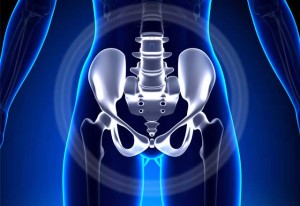
It’s more common than you think…
1 in 4 women and 1 in 9 men experiences incontinence at some point in their life. Only 1 in 12 cases are known to health care workers because people are often embarrassed to talk about it, or they are afraid health care providers will simply dismiss their symptoms.
7 out of 10 women experience low back pain during pregnancy and 2 out of 10 women experience pelvic girdle pain during pregnancy. Many people are affected by pelvic health dysfunction…so let’s talk about it!
It affects people in different ways…
Our pelvis contains many muscles and other tissues that help to support our organs and joints. These muscles must be able to contract and relax to allow for proper bowel and bladder function, and in women – proper sexual function. We don’t usually pay attention to this system until something isn’t working properly or when symptoms start to appear. Symptoms of pelvic floor dysfunction may include constipation, incontinence, pelvic girdle pain, feelings of ‘heaviness’, painful intercourse or persistent low back pain.
Incontinence is a common symptom in people with pelvic floor dysfunction. Some people experience an extreme urge to urinate but do not experience symptoms of leakage. Some people experience leakage when they cough, sneeze, laugh or jump. Many women also develop low back pain or pelvic girdle pain during pregnancy or after giving birth.
It is often misunderstood…
There are several myths out there about pelvic health and incontinence.
“It is normal to experience urinary leakage after childbirth.”
INCORRECT
Urinary leakage is NOT a normal consequence of childbirth.
“It is normal to experience urinary leakage as you age”
INCORRECT
Urinary leakage is NOT a normal consequence of aging
“Pelvic floor dysfunction only affects women.”
INCORRECT
Pelvic floor dysfunction affects BOTH women and men of all ages.
It impacts your quality of life…
Some people may stop doing certain activities or hobbies because of their symptoms. Many people feel embarrassed so they don’t seek any help. Those dealing with pelvic floor dysfunction may decrease their social activity, physical activity and may become isolated and experience decreased self-esteem. Many people may not seek treatment because they feel that there is nothing that will help.
There IS something you can do about it…
KEGELS ARE NOT ALWAYS THE SOLUTION…
Depending on the type of incontinence you are experiencing, kegels may actually make your symptoms worse! Some types of incontinence may be caused by an overactive pelvic floor.
Doing kegel exercises may cause more overactivity in the pelvic floor and will not help to relieve symptoms.
Your physiotherapist can do a thorough assessment and will give you the correct exercises to either relax or strengthen your pelvic floor. They will also work with you to make sure you are doing the exercises properly and using the correct muscles.
PHYSIOTHERAPY CAN HELP!
Research has shown that pelvic health physiotherapy is effective in treating symptoms of incontinence and should be included in the first line of treatment for urge and stress incontinence (Dumoulin & Hay-Smith, 2010). There is also research to support the use of pelvic floor physiotherapy in treating painful bladder conditions (American Urological Association, 2010).
The Society of Obstetricians and Gynaecologists of Canada also recommends that pelvic floor physiotherapy and core stability training be incorporated to prevent and treat pelvic and back pain during and after pregnancy (Britnell et al., 2005). In France, pelvic floor physiotherapists are involved in pre- and post-partum care for all women. This is not yet the standard of care in Canada.
A proper assessment by a pelvic health physiotherapist will help to identify the root cause of your pelvic dysfunction symptoms. Pelvic health physiotherapists use a combination of internal and external assessment and treatment techniques. These include massage, muscle release techniques, acupuncture, pain education and therapeutic exercise to help patients restore proper pelvic floor function.
Your physiotherapist will work with you to ensure that you are comfortable will all the assessment and treatment techniques being performed.
A pelvic health physiotherapist can also help with other conditions:
Prenatal/post-natal back or pelvic pain
Pelvic organ prolapse
Painful intercourse
Chronic pelvic pain
Dyspareunia (difficult of painful sexual intercourse)
Vaginismus
Vulvodynia
Endometriosis
Interstitial cystitis
Chronic prostatitis
Pelvic health physiotherapy is covered under extended health benefit plans.
Have more questions? Not sure if physiotherapy can help?
Contact Kelly Leong, Physiotherapy Resident at kleong@formfunctionclinic.com
The Formula for Happiness

We are always told that being active is important, but the question remains, why? Did you know that being active can help with every aspect of your life including how happy you are?
Conditions such as Heart Disease, Stroke, High Blood Pressure and Obesity are all related to how physically active you are. With all conditions, plaque builds up in your body and restricts the blood to pass through the body causing many different conditions. Plaque is built up because of high cholesterol levels combined with a few other elements creating a hard substance on the walls of the heart and various organs.
The most effective way to reduce these harmful effects is to be physically active. Physical activity has been proven to reduce the cholesterol in your blood, as well as burn fat as well as limiting the number of low density lipoproteins (LDL) to be formed in the body.
In addition to reducing the harmful effects of cardiovascular disease, physical activity also gives you more energy throughout your day. When you become active, you make your heart stronger and more able to pump blood at a greater volume. This naturally causes an increase in energy. In addition it helps us sweat which naturally eliminates the toxins in our blood which is the cause of fatigue.
Being active also will create a better mood. When we work out, endorphins are released. This particular hormone is responsible for making us happy. This hormone is knows to stay circulating in our bodies for several hours which also is responsible for making us calm and more patient. A very good attribute to have!
You only require 30 minutes of activity 3 times a week. This very short period of time is all that’s required to make yourself healthy and happy!
Speak with one of the health professionals at Form and Function today to get started on your path to happiness!
Paul Henein
Health Talk: Have you ever had a Concussion?
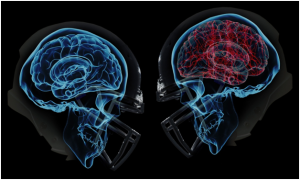
A concussion is an injury to the brain that changes the way your brain functions. The effects are usually temporary and include headaches, trouble concentration, memory loss (amnesia), balance and coordination.
Concussions are usually caused by an impact to the head but can also occur when the head and upper body are violently jarred. Most concussions do not result in loss of consciousness. This allows concussions to plague more recreational athletes because they don’t realize they have one.
Concussions are common, especially if you play a contact sport such as hockey. Each time you get a concussion, it’s your brain that has to heal. Most concussions are mild and people can recover fully.
The most common symptoms after a concussion are headache, memory loss and confusion. Other symptoms can include:
– loss of consciousness
– feeling of pressure in the head
– a fog like state of mind – confusion
– appearing dazed
– forgetting what happened
– dizziness
– double-vision
– sensitivity to light
– seeing stars
– nausea
– vomiting
– slurred speech
– slower response to questions
– fatigue
These symptoms can manifest immediately or over the next few hours up until days after an injury. In children – this can be a change in personality – lack of interest in favourite toys/foods, increased irritability and crankiness, loss of balance and unsteady walking, and excessive crying.
The Cause
After hitting your head – the force of the impact causes your brain to hit against the inside of the skull. This movement causes brain cells to stretch and or tear changing their electrical and chemical balance. This change is critical to their function and communication which in turn gives us the many symptoms of a concussion. After an injury the brain is left in a highly stressful state where it begins to heal itself.
A concussion is essentially an energy crisis within the brain. After an injury – the brain will try to heal itself – which by nature demands a lot of energy. This is why the single most important thing you can do if you think you are suffering a concussion is to GET REST. Rest is both mental AND physical rest in conjunction to addressing any associated neck injuries you may have suffered.
After a single concussion – there is a window of brain vulnerability – this is when the brain is in its healing state and demands the most energy. This is usually from day 3-7 after an injury. If you suffer a second head impact during this time your concussion will get worse. This can prolong proper complete recovery up to 6 months to 2 years.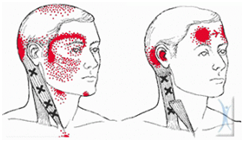
Associated Neck injury
Anytime there is enough force for you to have a concussion – there can be an associated whiplash through the neck. The amount of force to allow your brain to slosh into the inside of your head is enough to irritate or cause some issues into the neck. Sometimes some of the symptoms you think are a concussion can actually be coming from your neck!
How can I help?
I can assess you to see a baseline in your balance and function as well as address any musculoskeletal issues (muscle, ligament, joint, nerve) in the neck after an injury. After an assessment I can explain to you what is going on and the plan to achieve a full recovery – including exercise to make your neck stronger!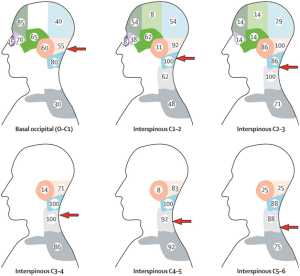
Dr. Jon Leung, DC
Health Talk: Why Do My Feet Hurt? Recent Study Highlights Two Conditions
Dr. Roger SinghHaving pain on the sole of the feet is a common condition that can be confused as being plantar fasciitis. It is possible to have pain as result of degeneration or irritation of the fat pad on the heel of the foot. Here is a summary of the similarities and differences between the two conditions based on a recent study.
Patients with plantar fasciitis commonly experienced first-step pain in the morning and relief of pain after walking. Unilateral pain was more common than bilateral, and patients with plantar fasciitis had pain duration of less than 6 months. Patients with plantar fasciitis also had decreased ankle dorsiflexion (bringing the foot upward). As such, their pain could be aggravated with dorsiflexion.
Patients with fat pad atrophy suffered from not only aching pain but also tingling, cold and burning sensations. They complained of pain after a long walk, pain at night and resting pain. Bilateral pain was more common than unilateral pain. In 61.1% of patients with fat pad atrophy, pain duration was over 6 months, and 22% of these patients had pain duration of over 2 years.
It was also noted that both conditions can occur simultaneously, presenting with symptoms that fit both conditions.
Both of these conditions are responsive to treatment, including orthotics. In the case of plantar fasciitis, it can be treated with Myofascial Release Technique and Graston Instrument Assisted Soft Tissue Technique, which has proven to be very effective methods of treatment with patients showing very positive results.
Speak with a health professional at Form and Function today to get your feet healthy and happy!

